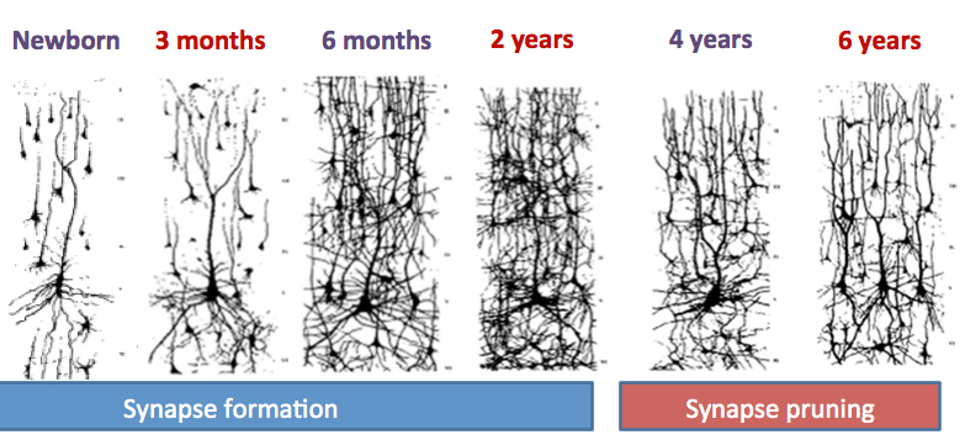
A child’s brain undergoes an impressive amount of change between birth and age three. In fact, by age three, the brain has reached 80 percent of its adult volume. Because a child’s developing brain is most flexible during the earliest months and years of life, this time period sets the foundation for lifelong health and wellbeing. Dr. Nikki Edge, Professor at the University of Arkansas for Medical Sciences in the Department of Family and Preventive Medicine, is answering our questions about how to ensure our children are “wired” for success:
What is so important about brain development from birth to age three?
The first brain development fact you need to understand is that the brain develops through an interaction of our genes and our environment. In other words, both what we are born with and what we experience will play a role in shaping our brain.
The way that the brain processes information is by forming networks of connections between nerve cells in our brain, called neurons. At birth, we already have just about all of the neurons we will ever have. That part is mainly set – that is the part we are born with.
We have to develop connections between the neurons that allow them to communicate – How these synaptic connections develop is going to be dependent on our everyday experiences. So, putting it simplistically, neurons represent the part of the brain that we came into this world with, and the development of synaptic connections is the part shaped by our environment.
Think about telephone poles and wires. Imagine a city born with all the telephone poles that are needed but we have to wisely string the wires between them so that communication between parts of the city can take place. Neurons are the poles and synapses are the wires.
What is so important about brain development in the earliest years of life is that it is happening faster than it ever will again. The brain doubles in size in that first year and continues to develop at a more rapid pace in these early years than it ever will again. If building a brain is like building a house, then we would think of the first three years of life as the time the all-important foundation of the house is being laid. Everything that comes after depends on this solid foundation.
How do we make sure children’s brains are “wired” for success?
Children need adequate nutrition. They need an environment free of highly stressful negative experiences like abuse, neglect, living in domestic violence, homelessness, etc. And they need consistent responsive interactions from adults around them.
The way adults interact with children is so important, because children’s everyday interactions with the world around them are what stimulate the brain to form new synaptic connections. As babies, everything we take in around us prompts the brain to form new synaptic connections – things we see, feel, smell, and hear. And one of the key ways this happens is through what we call serve and return interactions between babies and adults. Like tennis – a back and forth between two players. Baby serves to us…smile, a coo, a cry, pointing. And we respond. We smile back, we coo back, we look where she points, we name an object, we comfort her crying. These everyday interactions prompt new synaptic connections and reinforce ones that already exist. A baby smiles and the adult responds, and with enough repetition, the brain knows it will need to keep that connection

How can we make sure a baby’s brain is being stimulated?
This building of synaptic connections is an all day, everyday kind of thing. Every interaction is stimulating and reinforcing connections. Even just adults talking through their daily routine….talking to the baby while diapering, narrating what is happening while they bathe them. In those everyday interactions the part of the brain that produces language is responding to this and the synaptic connections that will support communication and literacy lifelong will be strengthened. Or when a mom says to a toddler, here is a half a cup of milk, the part of your brain that will ultimately support mathematical reasoning is being strengthened.
One thing to point out here is that not just any stimulation is going to result in a properly wired brain. Take educational videos. It’s stimulating, but it doesn’t have this back and forth aspect. This serve and return that babies need to really solidify those synaptic connections we want them to keep to support their later development.
In our homes, in child care, wherever they are cared for, our children are spending many hours with their brain literally in someone else’s hands. Both at home and in early learning environments too many children don’t receive what they need to build the kinds of connections we need. Serve and return is missing – they are serving, but no one is playing the game with them. Synaptic development is not occurring as we would hope and underused pathways get pruned back.
